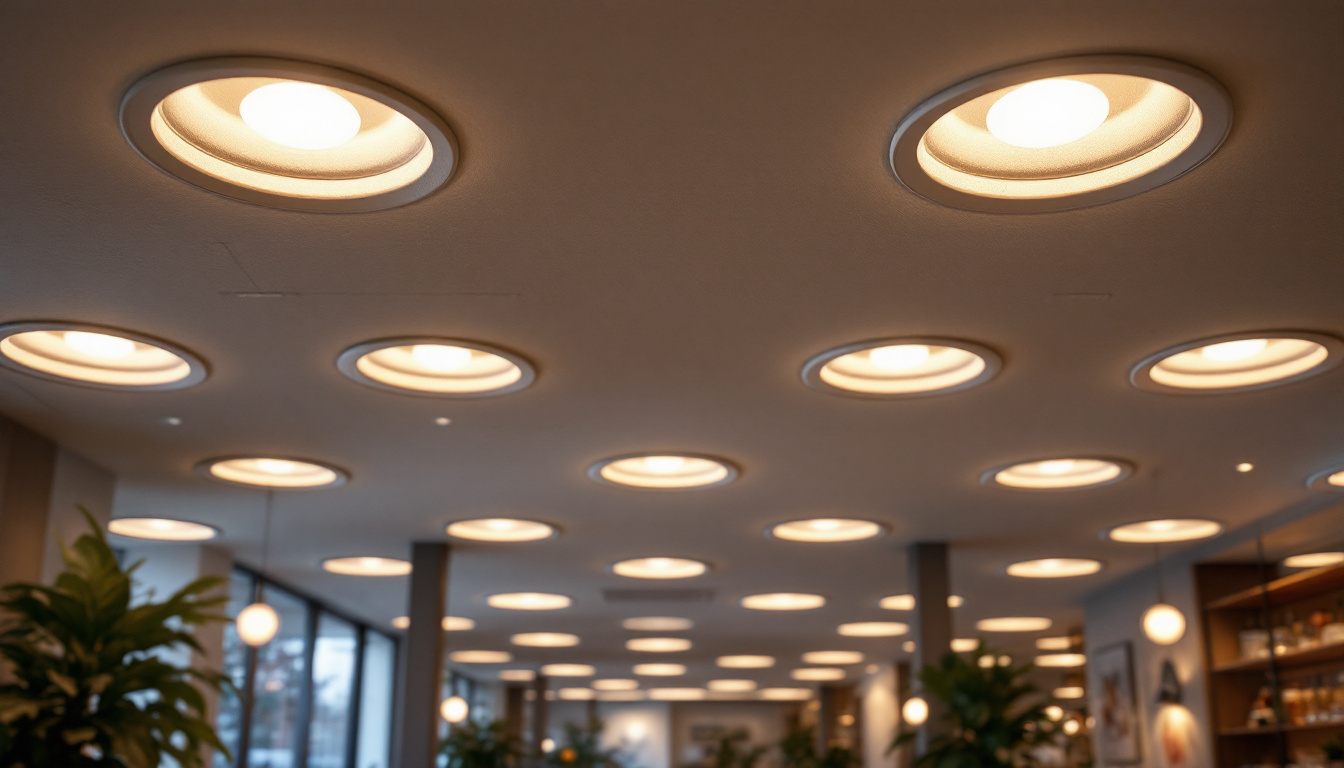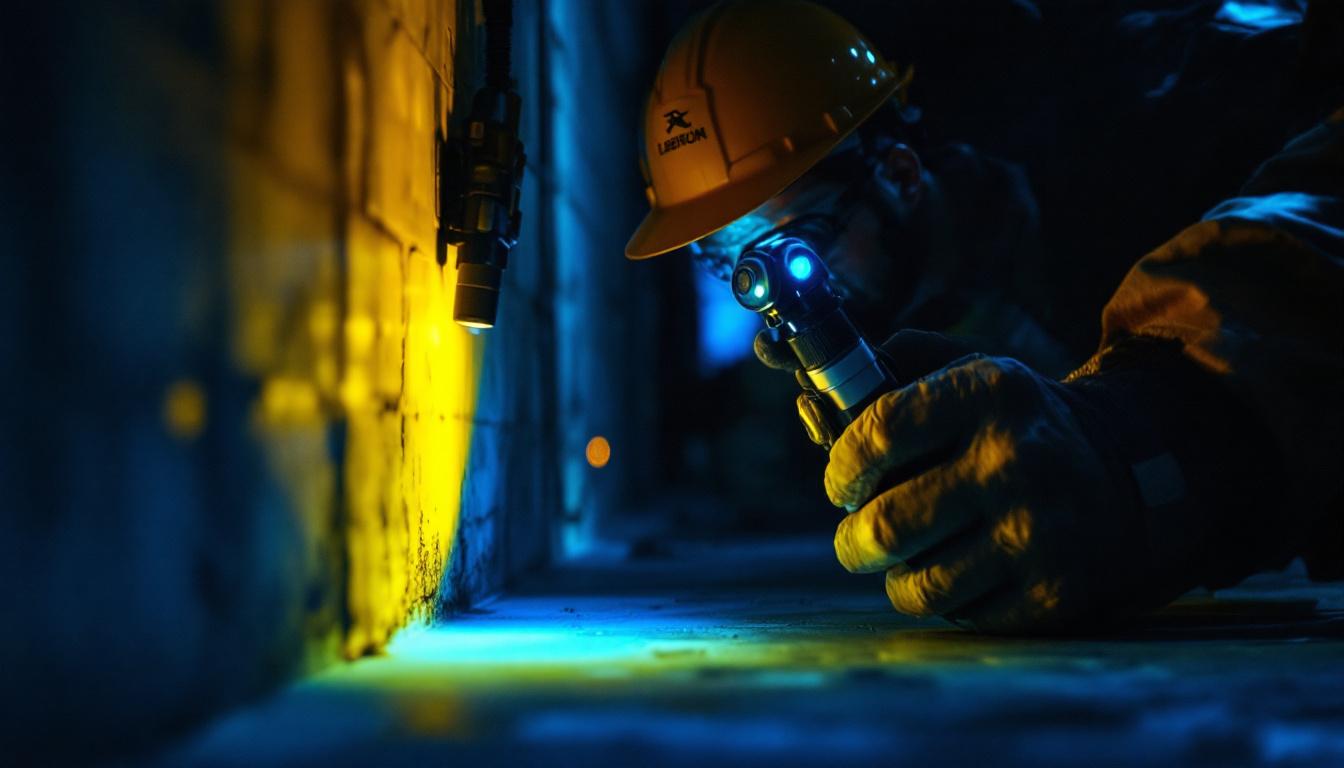
In the ever-evolving world of lighting design, recessed light cans have emerged as a staple in modern architectural and interior lighting solutions. These fixtures, often referred to as can lights or downlights, provide a seamless and elegant way to illuminate spaces without sacrificing aesthetics. This article explores the significance of recessed light cans, their benefits, and their applications in various settings, catering specifically to lighting contractors who play a pivotal role in implementing these solutions.
Recessed lighting involves fixtures that are installed into the ceiling, creating a clean and unobtrusive look. The light source is typically housed in a cylindrical can, which is why these fixtures are commonly called light cans. This design allows for a variety of lighting effects and styles, making them suitable for both residential and commercial applications. The seamless integration of recessed lighting can enhance the architectural features of a room, drawing attention to artwork or highlighting specific areas without the distraction of bulky fixtures.
Recessed light cans consist of several key components that contribute to their functionality and versatility. The housing, trim, and bulb are the three primary elements that define the performance and appearance of the fixture.
The housing is the metal can that is installed within the ceiling, providing a secure and insulated space for the light bulb. This component is crucial for heat dissipation, especially in LED models, which can generate significant heat if not properly ventilated. The trim is the visible part of the fixture that can be customized to match the decor of the space, available in various finishes such as white, black, or metallic to complement any interior design style. Finally, the bulb type—whether LED, incandescent, or halogen—determines the quality of light and energy efficiency. LED bulbs, for example, are known for their longevity and lower energy consumption, making them a popular choice for modern installations.
There are various types of recessed light cans available, each designed for specific applications and environments. Some of the most common types include:
In addition to these common types, there are also specialized recessed cans designed for unique applications, such as wet-rated cans for bathrooms or outdoor spaces, which are built to withstand moisture. Furthermore, adjustable or gimbal recessed lights allow for directional lighting, making them perfect for accentuating artwork or architectural features. This versatility makes recessed lighting not only functional but also an essential element in modern interior design, providing both ambient and task lighting solutions tailored to individual needs.
The advantages of using recessed light cans are numerous, making them an appealing choice for both contractors and clients. Their functionality, aesthetic appeal, and versatility contribute to their growing popularity.
One of the most significant benefits of recessed lighting is its space-saving design. Unlike traditional fixtures that hang down from the ceiling, recessed lights are flush-mounted, which helps to create an open and airy feel in a room. This is particularly beneficial in spaces with low ceilings or in areas where overhead clearance is a concern. Furthermore, the unobtrusive nature of recessed lights allows for a seamless integration into various design styles, from contemporary to traditional, ensuring that the overall decor remains the focal point without distraction.
Recessed light cans offer a wide range of lighting options, allowing for customization based on the needs of the space. They can be used for general lighting, task lighting, or accent lighting, depending on the placement and type of bulb used. For instance, warm white LEDs can create a cozy atmosphere in living rooms, while brighter bulbs can enhance visibility in kitchens and workspaces. Additionally, dimmable options provide even greater flexibility, enabling homeowners to adjust the ambiance according to the time of day or occasion, making them ideal for everything from intimate dinners to vibrant gatherings.
With the rise of energy-efficient lighting solutions, recessed light cans equipped with LED bulbs have become increasingly popular. LED technology consumes significantly less energy than traditional incandescent bulbs, resulting in lower electricity bills and a reduced carbon footprint. Additionally, many recessed fixtures are designed to minimize heat output, further enhancing their energy efficiency. This not only contributes to a more sustainable home but also extends the lifespan of the lighting fixtures, reducing the frequency of replacements and maintenance. As energy costs continue to rise, the long-term savings associated with recessed lighting make it a wise investment for both residential and commercial properties.
Beyond their functional benefits, recessed light cans also enhance the overall aesthetics of a space. By providing a clean and modern look, they can highlight architectural features, artwork, or decorative elements in a room without the clutter of hanging fixtures. This subtlety allows homeowners to create a sophisticated atmosphere while maintaining a minimalist approach. Moreover, with various trim styles and finishes available, recessed lighting can be tailored to match any interior design theme, from sleek and modern to rustic and cozy, ensuring that the lighting complements rather than competes with the decor.
Another significant advantage of recessed light cans is their contribution to improved safety in a home or commercial space. Since these fixtures are installed within the ceiling, they reduce the risk of accidental bumps or injuries that can occur with hanging lights, particularly in high-traffic areas. Furthermore, recessed lighting can be strategically placed to eliminate dark corners and shadows, enhancing visibility and reducing the chances of trips and falls. This is especially important in areas such as hallways, staircases, and entryways, where adequate lighting is crucial for safety and security.
The versatility of recessed light cans allows them to be utilized in a variety of settings, from residential homes to commercial spaces. Understanding the different applications can help contractors make informed decisions when designing lighting solutions.
In residential settings, recessed lighting is often used to create a warm and inviting atmosphere. Living rooms, dining areas, and kitchens are popular spaces for recessed lights, as they can be strategically placed to highlight architectural features or artwork. Additionally, recessed lights can be used in bathrooms for a sleek and modern look, providing ample illumination without taking up valuable space.
In commercial environments, recessed light cans serve both functional and aesthetic purposes. Retail stores often use them to spotlight products, enhancing visibility and drawing customers’ attention. In office settings, recessed lighting can create a professional ambiance while reducing glare on computer screens. The ability to adjust the brightness and color temperature of recessed lights further enhances their adaptability in various commercial applications.
Recessed lighting is not limited to indoor use; it can also be effectively utilized in outdoor spaces. Outdoor recessed light cans can be installed in patios, decks, and walkways, providing safety and ambiance. Weather-resistant fixtures ensure durability and longevity, making them a practical choice for exterior lighting solutions.
For lighting contractors, understanding the installation process and considerations for recessed light cans is crucial to achieving optimal results. Proper installation not only ensures functionality but also enhances the overall aesthetic appeal of the space.
Before installation, careful planning of the layout is essential. Factors such as ceiling height, room dimensions, and the intended use of the space should be taken into account. A general rule of thumb is to space recessed lights approximately 4 to 6 feet apart for even illumination. However, specific requirements may vary based on the type of lighting desired.
Recessed light cans require electrical wiring, which must be done in compliance with local codes and regulations. It is essential to ensure that the electrical supply can handle the load of the fixtures being installed. Additionally, using dimmer switches can enhance the versatility of the lighting, allowing users to adjust brightness levels based on their preferences.
The trim of a recessed light can greatly influence the overall look of the fixture. Various styles and finishes are available, including baffle, reflector, and adjustable trims. Selecting the right trim can complement the design aesthetic of the space while optimizing light distribution. Contractors should consider the client’s preferences and the intended use of the space when making trim selections.
The lighting industry is constantly evolving, and recessed light cans are no exception. Staying informed about the latest trends can help contractors offer innovative solutions to their clients.
With the rise of smart home technology, recessed light cans are increasingly being integrated into smart lighting systems. These systems allow users to control their lighting remotely through smartphones or voice-activated devices. Features such as color-changing bulbs and programmable schedules enhance the functionality of recessed lighting, making it more appealing to tech-savvy clients.
Recessed lighting is being used to highlight architectural features in modern design. By strategically placing recessed lights to accentuate beams, arches, or textured walls, contractors can create visually stunning environments. This trend emphasizes the importance of thoughtful placement and design in achieving a cohesive aesthetic.
As sustainability becomes a priority for many homeowners and businesses, energy-efficient recessed lighting solutions are gaining traction. The use of LED technology continues to grow, with advancements in bulb design and efficiency. Contractors can play a vital role in educating clients about the benefits of energy-efficient options and helping them make informed choices.
Recessed light cans have become an integral part of modern lighting solutions, offering versatility, energy efficiency, and aesthetic appeal. For lighting contractors, understanding the various types, benefits, and applications of these fixtures is essential for delivering exceptional results to clients. As trends continue to evolve, staying informed about advancements in recessed lighting will empower contractors to provide innovative solutions that meet the needs of today’s consumers.
Whether in residential or commercial settings, recessed light cans offer a seamless way to enhance the ambiance and functionality of any space. By leveraging their unique advantages and adapting to emerging trends, lighting contractors can ensure that they remain at the forefront of the industry, providing clients with lighting solutions that are both modern and effective.
Ready to elevate your lighting solutions with the sleek design and energy efficiency of recessed light cans? Look no further than LumenWholesale for all your lighting needs. We provide contractors with high-quality, specification-grade lighting products at unbeatable wholesale prices. Our extensive selection not only meets but exceeds industry standards, ensuring that every project shines with reliability and performance. Plus, with free shipping on bulk orders, you can stock up on premium lighting without worrying about hidden fees or compromises. Don’t miss out on the perfect combination of quality, affordability, and convenience. Visit LumenWholesale today and discover the best value in wholesale lighting.

Discover how incorporating 24 fluorescent light fixtures into your projects can give lighting contractors a competitive edge.

Discover the essentials of handheld UV technology in the lighting industry with our comprehensive guide for contractors.

Discover the essential checklist for lighting contractors working with explosion-proof lamps.

Discover how motion detector outdoor lights can transform your lighting projects by enhancing security, energy efficiency, and convenience.